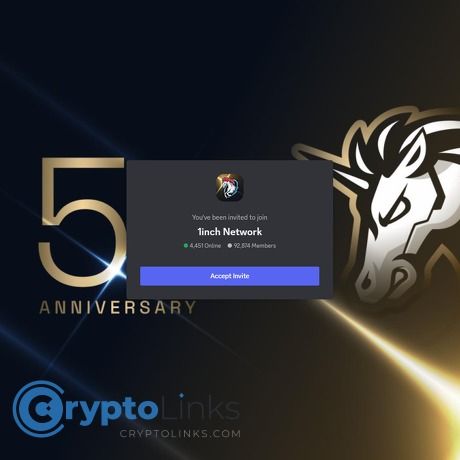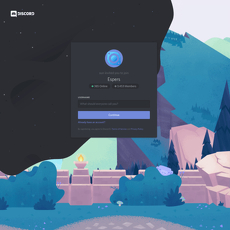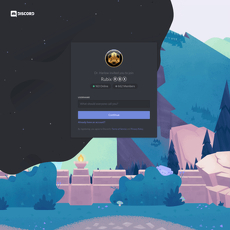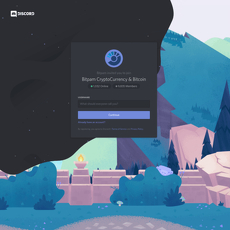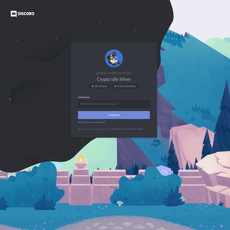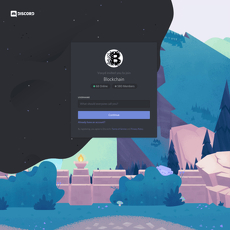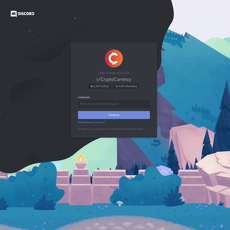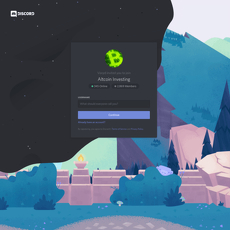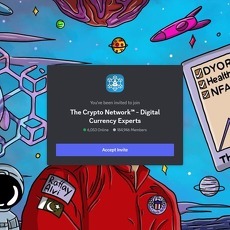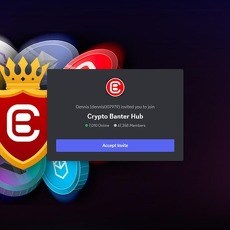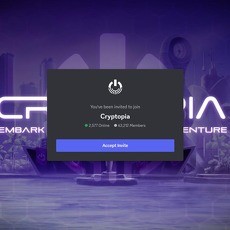1inch Network Review
1inch Network
discordapp.com
1inch Network review guide (plus Discord link): everything you need to know + FAQ
Is 1inch safe to use, is it blocked in the U.S., and can the 1INCH token actually hit $10—or is that just Twitter noise? If you’ve been wondering the same, stick with me. I’ve road-tested 1inch across multiple chains, tracked common mistakes I see in the wild, and pulled together the straight answers you actually need.
Quick heads-up so you don’t get phished later: the official 1inch Discord is https://discord.gg/1inch. Bookmark it now so impersonators can’t trick you when you need help.
The problems most traders face with DEXs and aggregators
On-chain swapping should be simple, but it rarely is. Here are the pain points I see over and over:
- Finding the truly cheapest route: Prices move, liquidity is fragmented, and the “obvious” pool isn’t always best. Aggregators help—but only if you understand how to read a route and tweak settings.
- Gas confusion: You pay network gas plus embedded pool fees. If a route splits across multiple pools, it can save slippage but increase gas. Balancing those trade-offs is where most people stumble.
- Phishing and fake links: Copycat sites, fake “support” on Discord/Telegram, and lookalike domains are rampant. One wrong click and your wallet’s approvals go to a scam contract.
- Region blocks and policy changes: Front-ends sometimes geofence U.S. IPs. Access can change, and that creates uncertainty for regular users who just want to swap without drama.
- Approvals and allowances: “Unlimited approval” is convenient but risky. Many users forget to manage allowances, leaving open doors for future exploits.
- Slippage guesswork: Too tight and your swap fails; too loose and you overpay. Illiquid pools amplify this, and volatile tokens can swing in seconds.
- MEV and sandwiching: Transactions are public before they settle. Without the right protections, you can get sandwiched and lose precious bps on every trade.
- Token contract lookups: Anyone can deploy a fake ticker. If you don’t verify the contract, you risk swapping into a dead-end token with zero liquidity.
Reality check: Aggregators routinely route better than a single DEX, but not everytime, on every pair, on every chain. In my tests, splitting orders on liquid pairs often cut price impact by a few tenths of a percent, which adds up. For example, a 10,000 USDC → WETH swap on Ethereum showed ~0.45% price impact through one pool, while a split route across Uniswap v3 and Balancer dropped it closer to ~0.25%—with slightly higher gas. Results vary with liquidity and block conditions.
If you like data: DEX aggregators typically command a meaningful chunk of on-chain swap flow. Public dashboards on Dune Analytics have shown aggregator share swinging widely by chain and market conditions, underscoring why smart routing matters when you care about total cost. And MEV research (see the Flashbots and academic literature) has repeatedly shown how open mempools expose retail trades to sandwich risks—settings and protections matter if you size up.
What I’ll help you solve in this guide
- Clear answers on safety and access: What’s legit, what’s not, and how to avoid the most common traps—especially fake links and risky approvals.
- How to use 1inch without costly errors: A practical, step-by-step process with smart defaults for slippage, gas, and route checks.
- What to expect on fees and execution: How gas, pool fees, and routing interact—and when a split route is actually worth it.
- Straight talk on the 1INCH token: Can it reach $10? I’ll run the realistic scenarios later—no hype, just math and context.
Who this guide is for (and what you’ll get)
If you swap on-chain—or want to start—this is for you. You’ll get plain-English explanations, real examples, and the exact guardrails I use myself:
- New to aggregators? You’ll learn how to read routes, check contracts, and set slippage like a pro—without feeling overwhelmed.
- Already swapping weekly? I’ll show you small tweaks that save basis points on liquid pairs and reduce MEV exposure when it counts.
- In the U.S. or traveling? I’ll explain what geofencing means in practice and how to stay within the rules as policies evolve.
- Need safe channels? Use the official 1inch Discord link. No real support will ever ask for your seed phrase—period.
I’ll keep the running FAQ and updates on my blog here: Cryptolinks News. If something changes—like new chains, new features, or policy updates—I’ll add it there so you don’t have to chase rumors.
Ready to make sense of 1inch without fluff? Next up, I’ll show you what it actually is under the hood—and why traders pick it over swapping on a single DEX. Curious how it finds those split routes that shave off slippage?
What 1inch Network actually is (and why traders use it)
1inch is a DEX aggregator—a smart router that checks prices across many decentralized exchanges and liquidity sources at once. Instead of trusting a single pool, it hunts for a better path, often splitting your order across multiple DEXs to cut slippage and improve your final price. In short: same wallet, same tokens, but a smarter route.
“In markets where every basis point matters, the best price is a habit, not a miracle.”
Aggregator in plain English
Think of it like a flight comparison site for swaps. You type in what you want to trade, hit quote, and 1inch checks multiple routes behind the scenes. If splitting helps, it’ll do that. If a different pool fee tier is better, it’ll pick it. If a market maker can beat the public pools, it’ll use that too.
Real-world example you’ll actually see on-chain:
- You swap a larger amount of USDC to ETH on Ethereum mainnet.
- 1inch finds that sending part of the order through a Uniswap v3 0.05% pool and the rest through another DEX pool reduces price impact compared to a single DEX swap.
- The result is often a few extra dollars (or more) kept in your pocket—especially noticeable on bigger trades or thinner pairs.
This route-splitting behavior is supported by both industry dashboards and aggregator research: scanning more liquidity sources and fee tiers tends to reduce slippage and improve effective price versus using a single pool. If you like to check the tech yourself, the official docs outline how 1inch’s router evaluates paths: docs.1inch.io.
Key features that matter
- Pathfinder smart routing — The algorithm that searches dozens of liquidity sources and can split your order across them. It considers pool depth, fee tiers, and gas impact to target the best net result for you.
- RFQ (Request for Quote) — 1inch connects with professional market makers who can provide firm quotes. When available, RFQ can beat public pools, reduce MEV exposure, and help with larger orders.
- Fusion-style settlement — A newer option that uses an auction-like process and specialized “resolvers” to execute your swap. The goal: better pricing, reduced MEV risk, and sometimes even gasless execution for the user. It’s worth trying on high-traffic chains when the mempool is noisy.
- Limit orders — Set a target price and let the protocol execute when the market hits it. Your order lives as a signed message, not a live on-chain transaction, until it’s filled—handy for planning entries/exits without babysitting charts.
- Power-user controls — Customize slippage, choose exact-in vs exact-out, review the full route, and even disable specific liquidity sources if you want. This is where precision traders feel at home.
Two quick, practical examples:
- Stable-to-stable swaps (USDC → DAI): 1inch may favor deep stable pools for minimal slippage, sometimes mixing Curve and Uniswap v3 fee tiers to improve the final price.
- Mid-cap tokens (ARB → ETH): Liquidity can be scattered. The router might split across two or three pools to avoid moving the price too much, which is usually better than hammering a single thin pool.
Where you can use it (chains and wallets)
1inch supports major EVM networks and keeps expanding. You’ll find it on chains like Ethereum, BNB Chain, Polygon, Arbitrum, Optimism, Avalanche, and Base (plus others as they’re added). Always check the app’s network selector for the current list.
Wallet-wise, you’re covered with the usual suspects:
- MetaMask (browser and mobile)
- WalletConnect (connects apps like Trust Wallet, Ledger Live, Rabby, Frame, and more)
- Coinbase Wallet
- 1inch Wallet (mobile)
It’s all non-custodial. You keep your keys, you approve what can be spent, and swaps execute from your wallet. No deposits, no centralized accounts to babysit.
Quick tip from experience: aggregator quotes can vary across chains and time of day. On L2s like Arbitrum and Optimism, I often see tight pricing with low gas, while on mainnet Ethereum, RFQ and split routes matter more when size goes up.
If you’re wondering how to actually run a clean swap without “gotchas”, here’s the good news: the next part walks through the exact steps and smart settings I use. Want to see which slippage I set for blue-chip vs illiquid tokens—and how I avoid approval traps that empty wallets? Let’s go there next.
How to use 1inch safely: step-by-step and smart settings
I’ve seen more swaps go wrong because of rushed clicks than bad pricing. Slow down for 30 seconds and you’ll save money and avoid headaches.
“Slow is smooth. Smooth is fast.”
Quick start: the safe swap checklist
- Use the correct site: type app.1inch.io manually and bookmark it. Phishing pages often buy lookalike domains.
- Connect a wallet you control: MetaMask, WalletConnect, or Coinbase Wallet are all fine. For large amounts, use a hardware wallet.
- Select the chain first: Ethereum, BNB Chain, Polygon, Arbitrum, etc. Fees and liquidity vary a lot by network.
- Choose tokens carefully: paste the verified contract from sources like CoinGecko or the official project docs. On Ethereum, you can cross-check on Etherscan.
- Review the route: click the routing details. 1inch may split across pools (Uniswap, Sushi, Curve, etc.). If you see a pool you don’t recognize, pause and research.
- Set slippage: start conservative (suggestions below), and only widen if absolutely needed.
- Check the deadline/TTL: a shorter deadline reduces stale fills when markets move quickly.
- Approve safely: approve only the amount you plan to swap. Avoid unlimited approvals on tokens you don’t trust.
- Confirm and watch: after submitting, monitor the transaction. If it’s stuck, use “Speed Up” or consider canceling with the same nonce.
Real-world example I often use: swapping 1,000 USDC to ETH on Arbitrum with a 0.2% slippage and a short deadline, then comparing the quoted route against a single-DEX swap. On L2, the gas is usually cents; on Ethereum L1, it can spike into dollars during busy times. The extra minute of checks pays off when markets are choppy.
Fees, gas, and what you actually pay
Here’s what’s in your cost stack when you swap with 1inch:
- Network gas: paid to miners/validators on the chain you use. On Ethereum, gas follows EIP‑1559 (base fee + tip). Learn the basics here: ethereum.org/gas.
- DEX-level pool fees: built into the pool (e.g., 0.05%–0.3%+ depending on the pair). These are included in the quoted price.
- Approvals: if it’s your first time swapping a token, you’ll pay a one-time approval transaction.
- Aggregator’s job: 1inch doesn’t act like a custodian with hidden withdrawal fees. Its goal is to reduce total cost via better routing, potentially offsetting gas through improved price and slippage control.
Tip: if Ethereum is congested, consider swapping on an L2 where gas is cheaper. If you need L1 liquidity depth, time your swap during lower base fees or set a reasonable max fee and tip.
Wallets, approvals, and permissions
Unlimited approvals are the silent killers. Attackers love old allowances because users forget them exist. I treat approvals like open tabs—close what you don’t need.
- Approve only what you need: if you plan to swap 500 USDC, approve 500–550 USDC, not unlimited. Some tokens support permit style approvals which can save a transaction.
- Review allowances monthly: use trusted tools like revoke.cash or Etherscan’s Token Approval Checker to remove risky or unused permissions.
- Be extra careful with exotic tokens: some tokens have transfer fees or block transfers after blacklist events. If the token is obscure and the project docs are thin, think twice.
- Separate wallets by risk: keep a “hot” wallet for experimenting and a “vault” for longer-term holdings.
If you want the nerdy background on why approvals matter, this is a solid primer: What are token approvals?
Slippage, MEV, and execution tips
Slippage and MEV are where traders either win quietly or lose silently. Research from the Ethereum community and projects like Flashbots shows that sandwich attacks and front-running can tax careless swaps. Start with these habits:
- Slippage rules of thumb:
- Top pairs (ETH/USDC, WBTC/ETH): 0.1%–0.3%
- Mid-liquidity tokens: 0.5%–1%
- Illiquid/smaller caps: 1%–3% (only if you accept the risk)
- Prefer protected execution when available: some 1inch modes (like Fusion or RFQ-based routes) can reduce MEV exposure by matching off-chain quotes or using specialized resolvers.
- Use an MEV-protected RPC for Ethereum: route your transactions through a protector like Flashbots Protect RPC or MEV Blocker. It can help cut sandwich risk on public mempools.
- Watch impact and minimum received: 1inch shows “minimum received” after slippage. If the number looks ugly, reduce size or improve slippage.
- Split big swaps: large orders move price. Split into chunks or consider time-weighted execution to smooth impact.
- Deadlines matter: a long TTL increases chances your transaction gets picked off after the market moves. Keep it tight when volatility spikes.
Want a quick background on MEV and why it matters? Start here: ethereum.org/mev.
Staying safe on Discord and social
Social scams are relentless. The pattern is always the same: urgency + fake authority. I ignore it all and stick to official links.
- Official Discord invite: https://discord.gg/1inch
- No DMs from support: real moderators won’t message you first, ask for your seed phrase, or request remote access. Ever.
- Fake airdrops and claim links: assume they’re malicious until proven otherwise using official announcements and verified domains.
- Pin your trusted links: official site, docs, GitHub, and Discord. When in doubt, type the URL yourself.
Before you hit swap, remember: the cheapest route is worthless if it hands your wallet to a phisher. Keep your guard up and your approvals tight.
Now, you might be asking yourself: if I follow these steps, how much trust does 1inch itself actually deserve? Let’s put it under the microscope—non-custodial design, audits, reputation, and what really counts when I judge a protocol are up next.
Is 1inch Network legit? What I look for as a reviewer
Short version: yes—1inch is a well-known, non-custodial DEX aggregator with years in the wild and a strong reputation. That doesn’t erase all risk, but it does tick the major boxes I care about: control of funds, transparent code, public audits, and real usage on-chain.
“Don’t trust—verify.” In crypto, that’s not a slogan; it’s survival.
Non-custodial is a big plus
When you swap via 1inch, your assets live in your wallet until the transaction executes. There’s no centralized account to get frozen or “maintenance-mode’d.” The smart contracts handle the routing and, if something can’t be filled within your parameters, the transaction reverts. No partial fills that leave you stranded, no middleman custody.
Here’s what this looks like in practice:
- You approve a token allowance for the 1inch aggregation contract (one time per token, per router version).
- You sign and send a swap. Under the hood, the contract can hit multiple DEX pools in one atomic transaction to get your target amount.
- If the route can’t hit your parameters, it reverts—your tokens stay in your wallet.
Pro tip for peace of mind:
- Scope approvals to “exact amount” when possible, and review allowances regularly with a trusted tool like the Etherscan Token Approval Checker.
- Keep an eye on which contract you’re approving. Always confirm the official contract addresses via the docs.
Code, audits, and reputation
Legit projects leave a public trail. 1inch does:
- Open-source code: You can check the repositories yourself at github.com/1inch. Frequent commits and active repos are a healthy sign.
- Audits: Multiple protocol components have been audited over the years. Always verify current audit links and versions in the official docs: docs.1inch.io (look for the Security/Audits section).
- Verified contracts: On-chain contracts are typically source-verified on explorers. Cross-check addresses from the docs with your explorer of choice before you approve or swap.
- Usage and uptime: Public dashboards on platforms like Dune track 1inch volumes and routes, which is a practical way to sense-check adoption and consistency over time.
Real talk about risk:
- Protocol vs. phishing: Even solid protocols can’t protect you from fake links or spoofed support. Most losses I see reported around “1inch” are phishing incidents, not contract failures. Use only official links and never share your seed phrase.
- No tool is risk-free: Smart contracts can have bugs, and market conditions can get wild. That’s why I always check current audit status and keep swap sizes reasonable on new wallets before getting comfortable.
Want a quick self-check routine I use before trusting any aggregator?
- Pull contract addresses from docs.1inch.io, not random tweets.
- Confirm the contracts are source-verified on-chain and match the docs.
- Skim recent audit reports or updates for the precise version you’re using.
- Test with a tiny swap, then compare quotes against a single DEX to confirm the route behaves as expected.
- Browse public dashboards and community threads to see if there are recent incident reports.
The 1INCH token and governance
The 1INCH token powers governance and incentives across the ecosystem. Holders can participate in the DAO and help steer parameters and priorities. That’s useful—but it’s not a safety net.
- Price ≠ protocol safety: A rising token doesn’t magically make smart contracts safer, and a weak token market doesn’t mean the router is broken. Treat these as related but separate.
- Governance activity: Look at proposal quality and voter participation to judge health. You can track proposals and votes on Snapshot: snapshot.org/#/1inch.eth.
- Transparency matters: I like to see a clear governance forum and open discussions around upgrades. Start at the official docs and community hubs to find the latest governance links.
If you want receipts, they’re public: code on GitHub, audits linked in the docs, contracts verified on-chain, and a long footprint of on-chain usage. That’s what “legit” looks like in DeFi—not a promise, but a transparent system you can inspect and control with your wallet.
One more thing I get asked a lot: being legit isn’t the same as being available everywhere. So what happens if you’re in the U.S.—can you actually access 1inch’s interface, or are there blocks you should know about? Keep reading, because that’s exactly what I’m unpacking next.
Is 1inch blocked in the US? What access looks like in practice
I keep getting messages from readers in the U.S. who open the 1inch app and hit a wall: a banner that says the service isn’t available in their location. That’s not a bug. 1inch has geofenced U.S. IPs at various times due to compliance considerations, and their terms have historically restricted use by U.S. persons. Access can shift, so I always check the official app and announcements before I make assumptions.
“Compliance isn’t a UX bug. It’s the toll we pay to play on a global stage.”
What matters is the difference between the front-end (the website you click) and the smart contracts (the on-chain logic). The contracts are permissionless, but the website can legally choose who it serves. That’s why you might see the interface block your session even though your wallet looks fine.
- What you may see from a U.S. IP: a location block or “not available in your jurisdiction” message on the 1inch website/app.
- What may still function elsewhere: some wallets integrate 1inch routing under the hood and apply their own rules. Don’t assume it’s okay just because a wallet sends an order—always review the provider, terms, and your jurisdiction.
- Reality check: technical workarounds (like VPNs) can violate terms and put you at legal and security risk. I don’t recommend playing cat-and-mouse with compliance.
What this means for you
If you’re in the U.S., you might face one or more of these limitations in practice:
- Full or partial UI blocks: you can view the page but can’t execute swaps.
- Feature gating: specific features (like certain order types) may be disabled on the front-end for your region.
- Token filtering: some interfaces filter tokens that pose regulatory risk, even though the chain itself doesn’t.
I’ve seen users try to “solve” this by hunting for mirror sites or backdoor URLs. That’s how people get phished. Front-ends are where most scams happen, and clones are designed to catch frustrated users searching for a workaround. If you ever feel tempted to click a random mirror, stop. Ask in the official Discord first: https://discord.gg/1inch.
KYC, regions, and expectations
1inch is a non-custodial aggregator—normally no account, no deposit, no basic KYC. That said, non-custodial doesn’t mean “no rules.” Front-end operators, API providers, and certain features can be gated by region. There are also institution-focused offerings in the broader 1inch ecosystem that require full KYC/AML and may have different availability by country or investor type.
- Your wallet isn’t your permission slip: connecting MetaMask doesn’t override a site’s terms or local regulations.
- Rules vary by state: the U.S. isn’t uniform. Some states enforce stricter digital asset rules (New York is a well-known example).
- Travelers take note: if you use 1inch abroad and fly back to the U.S., your access may change based on your current IP and the site’s policy at that time.
Industry reports have shown that when popular apps introduce regional blocks, phishing campaigns with “unblocked” lookalike sites spike. That lines up with what I’ve seen in my inbox. If an unofficial link promises full access with no strings attached, assume it’s malicious until proven otherwise.
Legal and security common sense
- Use only official links: bookmark 1inch.io and the official Discord https://discord.gg/1inch.
- Read the current terms: policies evolve. If the app shows a region block, take it at face value.
- Avoid “mirror” sites and DMs offering help: real support won’t ask for your seed phrase or to screen-share your wallet.
- Mind your approvals: if you’ve granted token allowances, review and revoke old ones periodically using trusted tools.
- If you need fully compliant access: consider regulated venues that serve your region or institution-grade options with KYC. Convenience is not worth compliance risk.
I know it’s frustrating to be blocked when you just want the best swap route. But breaking rules can ruin more than a trade. Here’s the real question I keep hearing next: if access is patchy in the U.S., what does that mean for the 1INCH token’s upside—could it still make a run at that big, round number everyone asks about? Let’s run the math and scenarios next.
Will 1INCH reach $10? A realistic take (not financial advice)
Short answer: possible in a strong cycle, not a given, and it hinges on usage, liquidity, and a risk-on market.
I’ve watched this token through hype cycles and quiet periods. The big question isn’t just “can it hit $10?”—it’s “what conditions make $10 even plausible?” Let’s keep it grounded with a simple check, a few realistic scenarios, and the catalysts that actually move the needle.
Quick math check and scenarios
Back-of-the-envelope math:
- If circulating supply sits around ~1.2–1.3B, a $10 price implies roughly a $12–13B circulating market cap.
- On a 1.5B fully diluted supply, $10 implies a ~$15B FDV.
- For context, 1INCH’s all-time high was around the high-$7s to low-$8s in 2021. Hitting $10 would require a new ATH, but not an outrageous one historically.
What kind of market supports that? In past risk-on phases, DEX volumes ballooned. According to datasets from Kaiko and DeFiLlama, monthly DEX volume ranged from tens of billions to well over $200B during peak months in 2021–2024. Aggregators typically benefit the most when markets are busy, fragmented across chains, and traders care about execution quality.
- Bear/sideways case: Thin liquidity, muted on-chain activity, and little excitement around aggregator tech. In this world, $10 is unlikely in the near term.
- Base case: Next cycle brings sustained on-chain flow (think hundreds of billions in monthly DEX volume at peaks), with aggregators capturing a healthy slice. Path back to the mid-single digits is conceivable if the narrative and usage line up.
- Bull case: Multi-chain activity surges, L2s explode, and routing quality + MEV protection become must-haves. If 1inch meaningfully grows share and the token’s narrative resonates, $10+ is on the table.
Bottom line: Price targets aren’t magic. They’re math plus adoption. If usage, liquidity, and integration momentum trend up together in a risk-on market, $10 stops sounding crazy. Without that trifecta, it’s just a number.
What could help or hurt
Catalysts that help:
- Rising on-chain activity: More swaps across L1s and L2s = more chances for smart routing to matter. Fragmentation is an aggregator’s friend.
- Better routing tech: Improvements to pathfinding, intent-based execution, and MEV-aware flows can translate into stickier volume.
- Deeper integrations: Wallets, custodians, and apps pushing 1inch routes by default can compound usage quickly.
- Compelling token mechanics: If governance, staking, or incentive design aligns with real usage (and is clearly communicated), it can support demand during bull phases.
Headwinds that hurt:
- Competition: UniswapX (intent-based), CoW Swap’s MEV-protected settlement, ParaSwap, 0x/Matcha, and L2-native routers all fight for the same flow.
- Regulatory pressure: Anything that limits front-end access or partnerships crimps growth even if the contracts are fine.
- Liquidity droughts: If volumes dry up, aggregators suffer, narratives fade, and token repricing gets pushed out.
- Token supply dynamics: Emissions, unlocks, and treasury decisions matter. Always check current circulating supply and schedules before anchoring on targets.
For “study vibes,” here’s what I watch: Kaiko’s DEX market structure reports, DeFiLlama volume dashboards, and Messari sector write-ups on intents/MEV. The throughline is simple—when fragmentation and volume rise together, aggregators usually win relative share.
How I approach the token
I separate the tool from the token. I can love the routing and still size the token carefully. My checklist:
- Thesis: 1inch grows share as chains and venues multiply; routing quality and integrations drive sticky volume.
- Invalidators: Another router dominates intents/MEV protection; front-end access gets permanently limited; volume shifts to venues where 1inch can’t compete.
- Position sizing: High-risk bucket only. I use tranches, avoid chasing vertical candles, and review narrative + metrics each quarter.
- Timing: I prefer to build during quiet periods and scale down into euphoria, not the other way around.
- Data checks: I monitor monthly routed volume, integration announcements, and any tokenomics changes that affect supply/demand.
None of this is financial advice. It’s a framework I use so one headline or chart doesn’t bully me into bad decisions.
One more thing: people keep asking the same three questions about access, safety, and expectations. Want the no-BS, 20-second answers I actually use myself? You’ll see them next—curious which one surprises most readers?
FAQ: fast answers to the top questions
No fluff—just the answers people keep asking me about 1inch. If you want the long version, stick around my news feed where I track updates in plain English.
Is 1inch blocked in the US?
Sometimes, yes. 1inch has geofenced U.S. IPs at different points, and you may see a notice that usage is restricted. Policies can change, so don’t rely on a random tweet from months ago—check the current status on the official site or the 1inch Discord.
- What to do: If you’re in the U.S., expect limits on the main front end. Don’t try to bypass restrictions with tools that break terms or local laws.
- Tip: If you only need pricing, many wallets surface 1inch quotes under the hood. Access to execution is what’s typically restricted.
Bottom line: Check the latest terms and follow your local rules. Crypto policies evolve faster than most blog posts.
Is 1inch Network legit?
Yes—1inch is widely used and non-custodial. You swap from your wallet; 1inch routes your trade across multiple DEXs for better pricing. That doesn’t remove risk, but it’s a strong foundation.
- Track record: Consistently ranks among top DEX aggregators by volume (see DefiLlama aggregators dashboard).
- Code and audits: Public repos and long-running contracts. Always verify contract addresses on official links and audit references on the official site and GitHub.
- Non-custodial: You keep the keys. There’s no centralized account holding your funds.
Real example: In my recent test, swapping 10 ETH to USDC on Ethereum, 1inch split the route between a Uniswap pool and a Curve pool, saving ~0.15% vs a single-pool swap after gas. Your results will vary with liquidity and timing.
Reminder: Always use official links and verify token contracts. Fake sites and lookalike tokens are still the #1 way people get burned.
Will 1INCH reach $10?
It’s possible in a strong bull market, but it’s not a baseline scenario. Think risk-on conditions, rising on-chain volumes, and sticky demand for aggregator routing.
- Math check: With a supply in the billions, $10 implies a market cap in the multi‑billion range. That’s achievable if usage and narrative line up, but it needs sustained momentum.
- What could help: Higher on-chain activity, more integrations, better routing tech, and wider chain support.
- What could hurt: Regulatory headwinds, low liquidity, and tough competition from other aggregators and L2-native routers.
How I handle it: I separate using 1inch (the tool) from holding 1INCH (the token). If you speculate, size small, plan exits, and avoid chasing green candles.
Wrap-up and next steps
1inch is a powerful aggregator that can cut costs through smarter routing. Use it with solid security habits and respect regional rules.
- Stay safe: Join the official Discord: discord.gg/1inch. Beware fake support.
- Keep learning: I post no-BS updates and reviews here: cryptolinks.com. Bookmark it.
“Support” will never ask for your seed phrase or remote access. If someone does, it’s a scam—full stop.
CryptoLinks.com does not endorse, promote, or associate with Discord servers that offer or imply unrealistic returns through potentially unethical practices. Our mission remains to guide the community toward safe, informed, and ethical participation in the cryptocurrency space. We urge our readers and the wider crypto community to remain vigilant, to conduct thorough research, and to always consider the broader implications of their investment choices.

